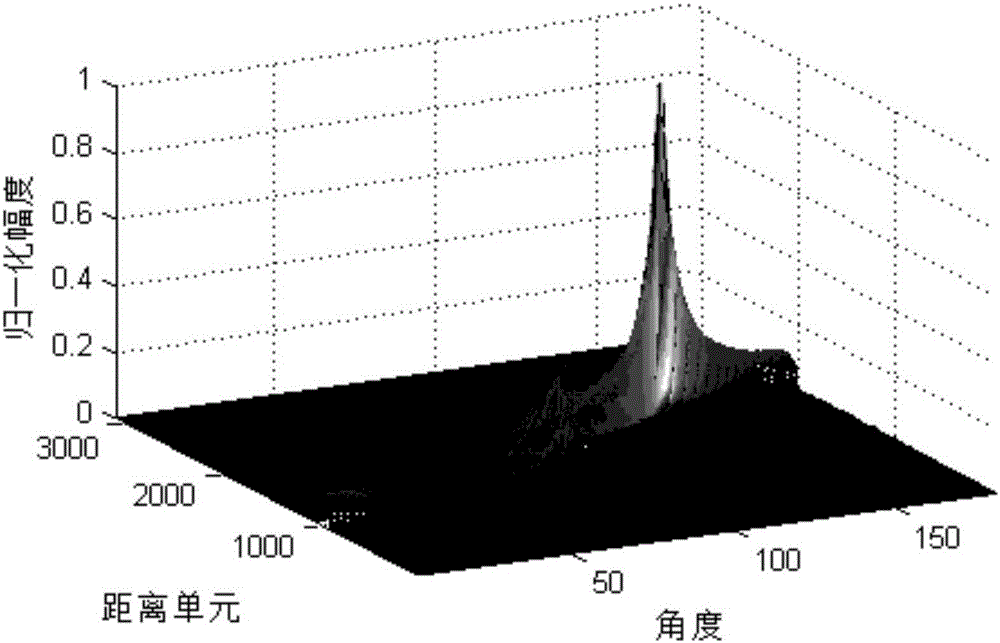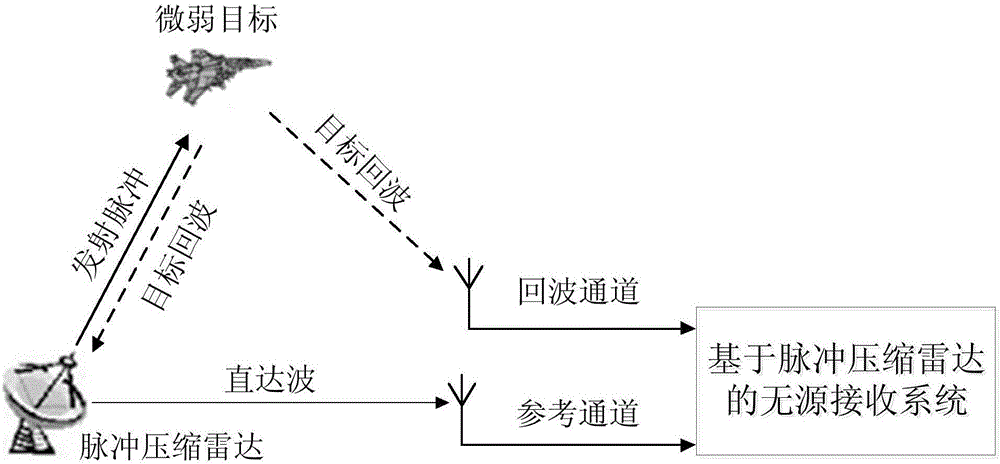Method for detecting non-cooperation pulse compression radar weak target based on wavelet denoising
A pulse compression radar and weak target technology, which is applied in radio wave measurement systems, radio wave reflection/reradiation, and measurement devices, etc., can solve the problems of echo signal spectrum aliasing and cannot be effectively removed, and achieve improved signal-to-noise Ratio, small amount of data processing, and the effect of simplifying the processing flow
- Summary
- Abstract
- Description
- Claims
- Application Information
AI Technical Summary
Problems solved by technology
Method used
Image
Examples
Embodiment Construction
[0034] The present invention will be further elaborated below in conjunction with the accompanying drawings and specific embodiments.
[0035] In this embodiment, a pulse compression radar is used as a non-cooperative radiation source. The radar is a pulse system, the signal modulation form is LFM, and the straight line detection method adopts Radon transform. The passive receiving system based on pulse compression radar is divided into a reference channel and an echo channel, which are used to receive the direct wave signal emitted by the pulse compression radar and the echo signal reflected by the target respectively. Its system composition diagram is as follows figure 1 shown.
[0036] refer to figure 2 In the implementation flow chart of the present invention, the target detection method of the non-cooperative radiation source based on wavelet denoising of the present invention specifically comprises the following steps:
[0037] S1. The passive receiving system based ...
PUM
 Login to View More
Login to View More Abstract
Description
Claims
Application Information
 Login to View More
Login to View More - R&D
- Intellectual Property
- Life Sciences
- Materials
- Tech Scout
- Unparalleled Data Quality
- Higher Quality Content
- 60% Fewer Hallucinations
Browse by: Latest US Patents, China's latest patents, Technical Efficacy Thesaurus, Application Domain, Technology Topic, Popular Technical Reports.
© 2025 PatSnap. All rights reserved.Legal|Privacy policy|Modern Slavery Act Transparency Statement|Sitemap|About US| Contact US: help@patsnap.com



